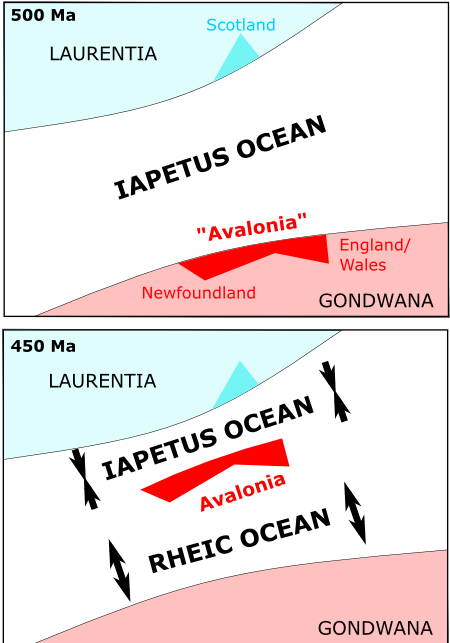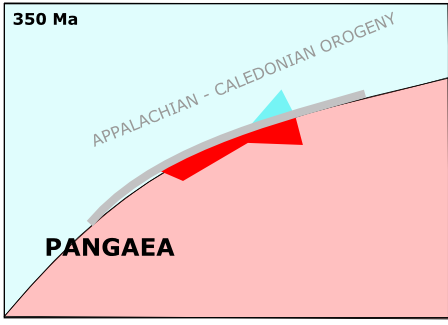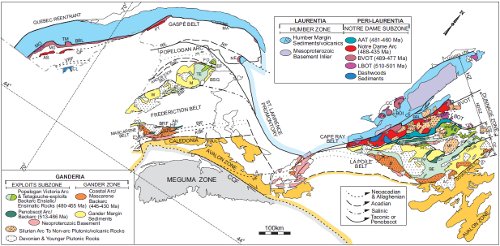 On the 11th day of Christmas my true love sent to me: 11 terranes amalgamating…
On the 11th day of Christmas my true love sent to me: 11 terranes amalgamating…
Strip away the last 200 million years or so of sediment covering the British Isles, and you discover a complicated jigsaw of different pieces of crust (in deference to Christie, I shall avoid calling it ‘basement’):

Adapted from Woodcock and Strachan (2000) Fig 2.8
The different coloured blocks are separated from each other by major faults, and have distinctive geological records: in other words, sequences of roughly the same age on adjacent blocks were formed in different depositional settings, and have different geochemical and fossil signatures. This suggests that these different crustal fragments – usually referred to as exotic blocks or terranes – started off their lives widely separated from each other, and have been juxtaposed by later tectonic activity involving the faults that surround them.
I have, in a previous post, discussed the period between about 500 and 350 million years ago, which started off with the crust underneath England and Wales (Avalonia) attached to Africa (or, as it was known in those times, Gondwana) on one shore of an ocean, and Scottish crust attached to North America (Laurentia) on the other shore; and ended with the closure of that ocean bringing them together, followed quickly thereafter by the rest of Gondwana, forming the Caledonian mountain chain in the process.


Read this if you want the details
Following this story, then, you might expect to see that the underbelly of the British Isles was composed of at most three independent terranes, representing Laurentia, Avalonia, and Gondwana. So why are there so many more? That is most easily explained by looking at what is happening, and what is going to happen, all the way round the other side of the world:

It might not be immediately obvious, but we’re looking here at the very early stages of another continental collision: that of Australia and south east Asia. If you run current plate motions forward for a few tens of millions of years, Australia will slowly move northwards with respect to the Eurasian plate, and eventually collide with it. However, if you look within the steadily closing ocean between them, it is obvious that this collision will involve more than the two bounding continents; there are also lots of smaller continental fragments, such as Indonesia and Papau New Guinea, lying between them. These fragments will not be subducted, but will also be swept up into the collision zone and crammed together into a geological mishmash of numerous unique crustal blocks, all with different origins and trajectories.
‘Imagine’, a lecturer of mine once said, ‘trying to sort out that mess in 50 million years’ time’. But it is a similar mess, made 350 million years ago, that awaits those trying to unravel the roots of the British Isles. The different terranes represent Palaeozoic Indonesias and Papau New Guineas, which were crushed together with Avalonia as they all collided with the margin of Laurentia; even, the southernmost terrane in the first figure, Armorica, is actually another crustal fragment that rifted away from a completely different part of the Gondwana margin than Avalonia, and was only eventually merged with it on the other side of an ocean. The eagle-eyed amongst you will also note that the Avalonian block itself can be divided into at least two distinctive terranes; a further complication that suggests an earlier history of amalgamation. And if you think Britain looks complicated, remember that the Appalachians formed along the same long-lived convergent margin:

Source: Natural Resources Canada
and lets not even start on the Pacific Northwest.
Basically, as a rule of thumb, if you keep subduction going for a few tens of millions of years, you end up with a geological mess. Or, if you’re willing to look at it the right way, the coolest and most challenging jigsaw puzzles ever.



Comments (1)
Links (1)-
Pingback: Standing up for serpentinite | Highly Allochthonous